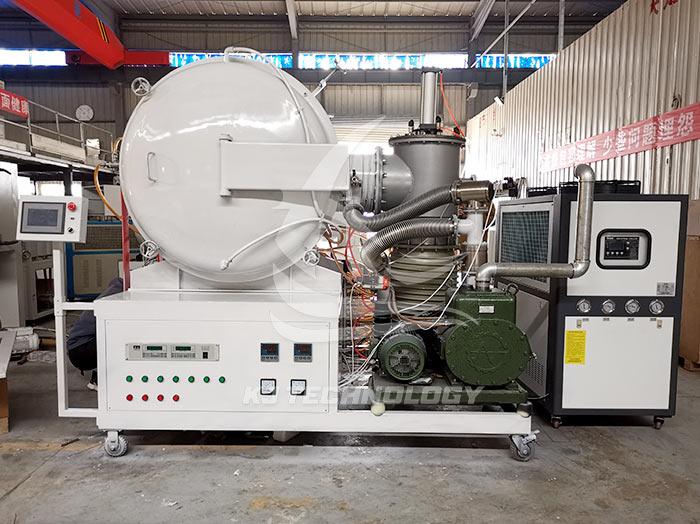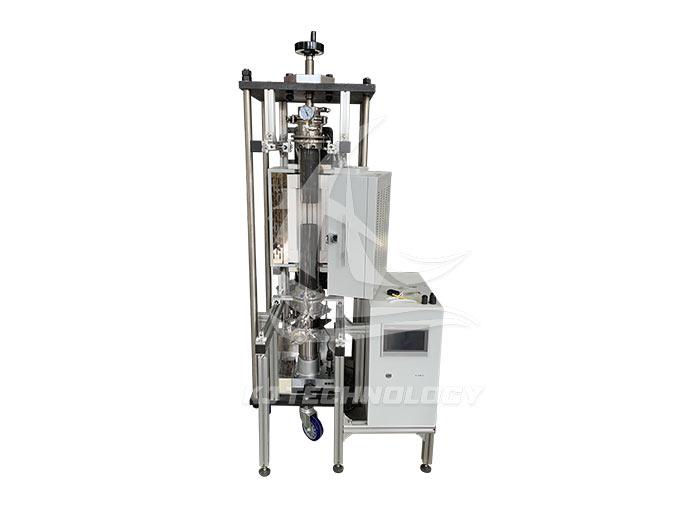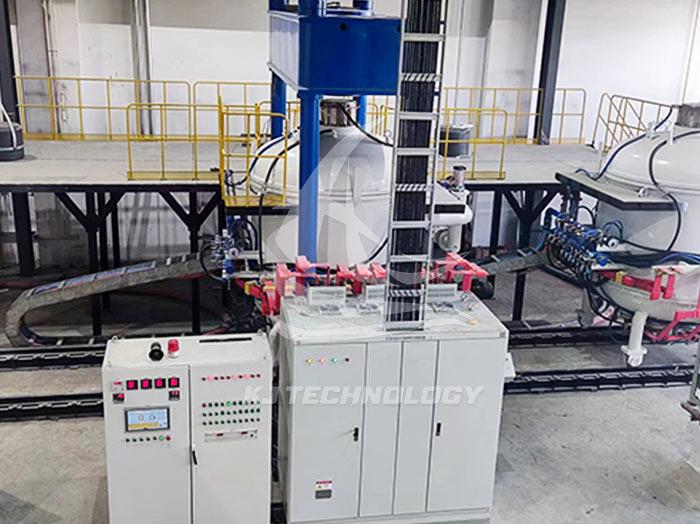Application fields of vacuum muffle furnace
 08-04-2025 Author: KJ technology
08-04-2025 Author: KJ technology
The vacuum muffle furnace provides a key heat treatment method for fields such as materials science and industrial manufacturing by combining vacuum environment and high temperature control technology. Its core advantage lies in avoiding material oxidation or contamination at high temperatures, while supporting reaction synthesis under specific atmospheres. The following are the main application areas and specific scenarios of vacuum muffle furnaces:
1. Materials Science Research
Research on Phase Transformation and Melting of Metal Materials
Application scenario: Study the phase transformation process (such as austenitization and martensitic transformation), melting behavior, and solidification structure of alloys at high temperatures.
Advantages: Vacuum environment eliminates oxidation interference and accurately observes the intrinsic properties of materials.
Example: Analyze the grain growth pattern of titanium alloy during vacuum annealing process.
Sintering and Crystallization of Ceramic Materials
Application scenario: Preparation of high-purity ceramics (such as alumina and silicon nitride), study of sintering kinetics and grain boundary behavior.
Advantages: Avoiding the introduction of impurities and controlling the grain size distribution.
Example: Sintering silicon carbide ceramics under vacuum to achieve high density and excellent mechanical properties.
Melting and Forming of Glass Materials
Application scenario: Melting special glass (such as optical glass, radiation resistant glass), studying the relationship between melt viscosity and temperature.
Advantages: Prevent crystallization on the glass surface and improve transparency.
Example: Preparation of low expansion coefficient quartz glass for spacecraft observation windows.
Synthesis and characterization of nanomaterials
Application scenario: Synthesize nanowires and nanoparticles through chemical vapor deposition (CVD) under vacuum.
Advantage: Accurately control the reaction atmosphere to obtain monodisperse nanomaterials.
Example: Reducing metal salt in hydrogen atmosphere to prepare ultrafine metal nano powder.
2. Metallurgical industry
Special metal melting and purification
Application scenario: Smelting high-purity metals (such as titanium and zirconium), removing gas impurities (such as hydrogen and oxygen).
Advantages: Low metal volatilization loss in vacuum environment, and product purity can reach over 99.99%.
Example: Electron beam melting of titanium alloy for aerospace fastener manufacturing.
Metal Heat Treatment and Surface Modification
Application scenarios:
Vacuum annealing: eliminates internal stress in metals and improves plasticity (such as annealing stainless steel strips).
Vacuum carburizing/nitriding: Enhancing the surface hardness of metals in a carbon or nitrogen atmosphere (such as gear surface hardening).
Advantages: Avoiding the formation of oxide scale in traditional infiltration treatment and improving surface quality.
Example: Vacuum quenching of mold steel to achieve a balance between high hardness and toughness.
Powder metallurgy product sintering
Application scenario: Sintered metal powder compacts (such as hard alloys, magnetic materials).
Advantages: Prevent powder oxidation and promote densification.
Example: Sintered tungsten cobalt hard alloy for cutting tool manufacturing.
3. Ceramic and composite material production
Batch preparation of high-performance ceramics
Application scenarios: Large scale production of structural ceramics (such as zirconia ceramic bearings) and functional ceramics (such as piezoelectric ceramics).
Advantages: Vacuum sintering reduces defects and improves product consistency.
Example: Sintered aluminum nitride ceramic substrate for heat dissipation of high-power electronic devices.
Synthesis of Metal Matrix Composite Materials (MMC)
Application scenario: Preparation of aluminum based and magnesium based composite materials in inert or reducing atmospheres.
Advantage: Prevent oxidation at the interface between the matrix and reinforcing phases (such as carbon fibers and silicon carbide particles).
Example: Aluminum based silicon carbide composite material is prepared by hot pressing under argon protection for use in automotive brake discs.
Ceramic metal connection technology
Application scenario: Achieving reliable connection between ceramics and metals (such as connecting ceramic nozzles to metal conduits).
Advantages: Vacuum brazing avoids joint oxidation and improves connection strength.
Example: Vacuum brazing of alumina ceramics and stainless steel using silver copper titanium active brazing material.
4. Semiconductor and Electronics Industry
High temperature treatment of semiconductor materials
Application scenarios:
Wafer oxidation: growing a silicon dioxide insulation layer in an oxygen atmosphere.
Doping diffusion: Introducing impurities into silicon chips through high-temperature diffusion to form PN junctions.
Advantages: Vacuum environment reduces impurity pollution and improves device performance.
Example: Rapid thermal annealing of silicon chips under nitrogen protection to repair ion implantation damage.
Sintering of electronic ceramic components
Application scenarios: firing multi-layer ceramic capacitors (MLCC) and piezoelectric ceramic filters.
Advantage: Control sintering shrinkage rate to ensure component size accuracy.
Example: Sintered lead zirconate titanate (PZT) piezoelectric ceramics for ultrasonic transducers.
Heat treatment of magnetic materials
Application scenarios: Preparation of soft magnetic ferrite (such as manganese zinc ferrite) and permanent magnetic materials (such as neodymium iron boron).
Advantages: Heat treatment under vacuum or inert atmosphere to optimize magnetic properties.
Example: Vacuum aging treatment of neodymium iron boron magnets to improve coercivity.
5. Aerospace and new energy fields
Testing of High Temperature Alloy Materials
Application scenario: Simulate extreme space environments (such as vacuum, high and low temperature alternation), test material thermal stability.
Advantages: Precise control of testing conditions and accelerated evaluation of material aging.
Example: Vacuum thermal fatigue test on nickel based superalloys for turbine blades.
Preparation of key components for fuel cells
Application scenario: Sintered solid oxide fuel cell (SOFC) electrolyte (such as yttria stabilized zirconia).
Advantages: Vacuum sintering reduces porosity and improves ion conductivity.
Example: Prepare SOFC electrolyte thin films with a thickness of ≤ 10 μ m to reduce the operating temperature of the battery.
Nuclear Material Handling and Storage
Application scenario: Vacuum annealing of nuclear fuel cladding materials (such as zirconium alloys) to eliminate radiation damage.
Advantage: Avoid surface oxidation of materials during annealing process and maintain corrosion resistance.
Example: Vacuum recovery treatment of irradiated zirconium alloy tubes to extend their service life.








